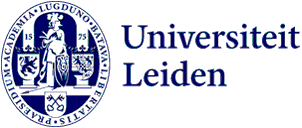
Museum Talks: ‘Our access to the past starts with in-depth knowledge of objects’
Geert-Jan Janse has always been fascinated by the way objects can bring the past closer. On 16 November, he will present a Museum Talk about his work as the director of the Vereniging Rembrandt (Rembrandt Association).
‘When you go to a castle, you see old furniture that people were sitting on two hundred years ago,’ says Janse. ‘So the past is still very physically present, while at the same time you’re entering a world that’s no longer there. The historian Johan Huizinga called this experience of connection with the past through historical objects the “historical sensation”. I’ve always find that a very fascinating experience, which for me is mostly evoked through objects.’
Inspiring discussions about classics
This fascination led Janse to follow two different degree programmes after high school: Art History at the University of Amsterdam and History at Leiden University. In his experience, the latter was well organised and structured, but also somewhat academic, although with some exceptions. For instance, he has good memories of a literature exam with Professor Nicolette Mout. ‘We had a very interesting and inspiring discussion about all kinds of classics and the ideas in them. For me, it was one of those moments when I thought: that’s how it can be done.’
Enabling ambitious collections
This is one reason why he chose an interdisciplinary research master’s on the history of ideas at the Warburg Institute in London. After this, he became acquainted with the museum world through various projects at the Rijksmuseum en the Teylers Museum. Then in July this year he moved to the Rembrandt Association. ‘At the end of the nineteenth century, many important Dutch collections were being sold in their entirety to other countries, especially America. Because the liberal government didn’t want to do anything about it, a group of private individuals in Amsterdam set up the Association to save important art works for the Netherlands.’
-

Geert-Jan Janse and rapper Leafs in front of 'De Vaandeldrager' -

Geert-Jan Janse and met Maike Woldring, director Stadsmuseum Rhenen in front of 'Gezicht op Rhenen', foto: Sander van den Bosch
Almost 140 years later, the Rembrandt Association is still concerned with Dutch collections, although its objectives have been adjusted somewhat over the years. The Association not only helps museums to acquire major works, such as Rembrandt’s The Standard Bearer at the beginning of this year, but also encourages ambitious collecting projects of smaller museums. This year, for example, the Society supported the purchase of a View of Rhenen by Jan van Goyen for the new City Museum Rhenen (see photo). ‘In recent years, the Association has made tremendous contributions to the Dutch art world with vast sums of money. This also means that we’re now faced with the challenge of replenishing our funds, so that we can continue to provide ambitious support in the future,’ says Janse, looking ahead, while immediately recalling that only a few years ago the Association was described as ‘the best kept secret in the Netherlands’. ‘Since then, people’s awareness of the Association has already greatly increased, but there are still many more opportunities out there.’
Objects as a key to the past
He’s therefore very pleased to be giving a Museum Talk in the series organised by the Faculty of Humanities. ‘I will look in more detail at our Association’s history, how our objectives became broader on a number of occasions during that history, and the challenges we’re facing at present. But I will also argue for collection-based research. At universities, art history and history are sometimes studied quite theoretically, but in-depth knowledge of objects stays of great importance. I very much welcome more opportunities for new perspectives on the Netherlands Collection, but knowledge of the object is also indispensable for a new narrative.'
From high-profile exhibitions to current topics within the museum world: in Autumn 2022 the Art History research group of Leiden University is organising several free Museum Talks, both on campus and online, given by researchers and curators.
